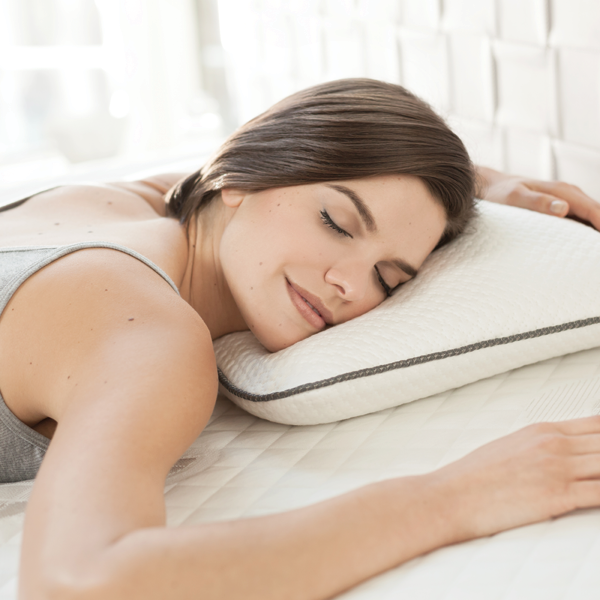Why a Regular Sleep Schedule is Essential for Your Health, Mood, and Waistline
In today's fast-paced world, sleep is often the first thing we sacrifice when life gets busy. Whether you're staying up late to meet a deadline, binge-watching your favorite show, or scrolling through your phone in bed, irregular sleep habits and chronic sleep deficits can take a serious toll on your physical health, emotional wellbeing, and even your weight.
Let’s explore why a consistent sleep schedule matters so much—and how you can take simple steps to sleep better, feel better, and live healthier.
What Is a Sleep Deficit—and Why Should You Care?
A sleep deficit occurs when you consistently get less sleep than your body needs. Most adults require between 7 and 9 hours of quality sleep per night. Missing even an hour or two each night can add up quickly and cause what scientists refer to as “sleep debt.”
This debt doesn’t just make you feel groggy in the morning. It affects almost every system in your body, from brain function to metabolism.
The Real-World Effects of Sleep Deficits
1. Impaired Health and Immune Function
Lack of sleep weakens your immune system, making you more susceptible to illnesses. Over time, chronic sleep deprivation increases your risk for heart disease, diabetes, high blood pressure, and stroke.
2. Mood Swings and Poor Mental Health
You’ve probably noticed that you’re more irritable or anxious after a bad night’s sleep. That’s because sleep plays a crucial role in emotional regulation. Without adequate rest, your brain struggles to manage stress, control impulses, and maintain a positive outlook.
3. Difficulty Managing Weight
Sleep has a direct impact on your appetite-regulating hormones—ghrelin and leptin. When you're sleep-deprived, ghrelin (which increases hunger) goes up, while leptin (which signals fullness) goes down. This can lead to late-night cravings and overeating, making weight management far more difficult.
4. Decreased Focus and Productivity
Cognitive performance takes a hit when you’re sleep-deprived. Your ability to concentrate, solve problems, and retain information diminishes—impacting everything from work performance to safe driving.
Benefits of a Consistent Sleep Schedule
Creating a regular sleep routine—going to bed and waking up at the same time every day—helps to regulate your body’s internal clock (your circadian rhythm). This consistency improves sleep quality, supports hormone balance, and makes falling asleep and waking up easier over time.
Even better? Regular, high-quality sleep boosts your energy, sharpens your mind, and helps you feel emotionally resilient—allowing you to show up as your best self each day.
Top 5 Tips for Better Sleep Health
- Stick to a Sleep Schedule
Go to bed and wake up at the same time—even on weekends. Your body thrives on rhythm. - Limit Screen Time Before Bed
The blue light from phones and laptops suppresses melatonin, the hormone that helps you fall asleep. Try turning off screens at least an hour before bed. - Create a Relaxing Bedtime Routine
Signal to your body that it’s time to wind down. This could include reading, journaling, gentle stretching, or listening to calming music. - Watch What You Eat and Drink
Avoid caffeine and heavy meals in the hours leading up to bedtime. Instead, opt for a light snack like a banana or herbal tea if you need something before bed. - Invest in the Right Sleep Environment
A supportive, comfortable mattress and a properly fitted pillow can make all the difference in your sleep quality.
Support Local, Sleep Better
Looking to upgrade your sleep setup? Support your health and your community by purchasing a locally built supportive mattress. Locally crafted mattresses often offer better quality control, more eco-friendly options, and personalized service that big-box brands can't match.
Don’t forget the importance of a properly fitted pillow—it aligns your neck and spine, reducing the chances of waking up sore or stiff. The right pillow and mattress work together to cradle your body and help you fall—and stay—asleep longer.
Final Thoughts
Sleep isn't a luxury. It's a non-negotiable foundation for good health, balanced moods, and sustainable weight management. By establishing a regular sleep schedule and creating the ideal sleep environment, you’re making an investment in your well-being that pays off every single day.
So tonight, power down your screens, fluff that perfect pillow, and slip into a supportive mattress made right here in your community. Your body and mind will thank you.
Sweet dreams!









